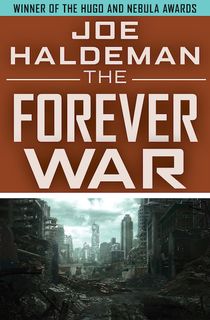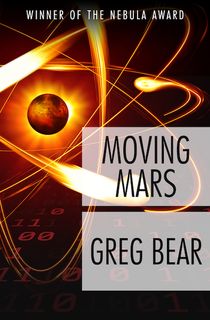The 52nd annual Nebula Awards ceremony will be held in Pittsburgh, Pennsylvania this year on May 20th. An annual celebration of the finest science fiction and fantasy writing, the awards have a longstanding tradition of launching now-lauded SF/F author careers. But the Nebulas have matured in many ways since they were first given in 1966, for works written in 1965. Back in the mid-60s, there were fewer voters and fewer votes—and thus much closer award races. And with ever-changing submission and eligibility rules, the voting process was chaotic at best. A multiple ballot system was finally implemented in 1970.
RELATED: 15 Must-Read Nebula Award-Winning Books
Half a century later, the Nebula Awards have become an Emmys-style party, where the guests are the Coolest Geeks Imaginable and there’s no Ryan Seacrest. The event is still hosted by the Science Fiction and Fantasy Writers of America, a members-only club that’s like the coolest high school clique—except nicer and more than willing to reenact The Lord of the Rings. Where else will you find authors like Naomi Novak, Ann Leckie, and N.K. Jemisin rubbing shoulders? (Aside from your bookshelf, of course.)

Authors Neil Gaiman and Cory Doctorow at the 2005 Nebula Awards.
Photo Credit: Cory Doctorow / Flickr (CC)Every year, SFWA’s 1500 members—which include editors, previous winners, and other authors—begin with a preliminary vote, nominating up to five works in the categories of Best Novel, Best Novella, Best Novelette, and Best Short Story. The six works—give or take, depending on ties—that earn the most votes go on to the second and final round.
Aside from winning, Nebula Award winners get a Lucite trophy embedded with its own glittering mini-solar system. The award was designed by none other than Where Late the Sweet Birds Sang author, Kate Wilhelm.
In recent years, the Ray Bradbury Award for Best Dramatic Presentation and the Andre Norton Award, which recognizes young adult works in the genre, have also been presented during the Nebulas, although they're not technically Nebula Awards. The former has been an ongoing matter of contention among SFWA but, hey, it’d be a shame if groundbreaking nominees like Get Out or The Shape of Water didn’t get a proper pat on the back from the SF/F community, right?

Best Novelette Award presented to Greg Bear.
Photo Credit: Jon / Flickr (CC)But the top honor, though technically not a Nebula Award, is the Damon Knight Memorial Grand Master Award, which recognizes a lifetime of work. Previous honorees have included Ray Bradbury, Ursula K. Le Guin, Samuel R. Delany, and Clifford D. Simak. So, in summary: the brightest stars in the SF/F galaxy. The awards’ history is studded with the greatest minds and books of the genre. Take a look at the timeline to see the highlights!
1966: The first official Nebula Awards ceremony. Frank Herbert took home Best Novel for Dune, now a classic example of science fiction world building—and the world’s bestselling SF title.
1967-1968: It’s a draw! Samuel R. Delany’s literary space opera, Babel-17, ties with Daniel Keyes’ Flowers of Algernon. Delany would go on to win for The Einstein Intersection the following year.
RELATED: Sci-Fi Legend Samuel R. Delany Doesn't Play Favorites
1970: Ursula K. Le Guin becomes the first female Best Novel winner (The Left Hand of Darkness, Best Novel). And it certainly isn’t her final rodeo. She clinches a second win for The Dispossessed in ’75 and a third for Tehanu: The Last Book of Earthsea in ’91.
1971-1974: The Space Race and the moon landing inspire the works of Larry Niven, Isaac Asimov, and Arthur C. Clarke—all of whom nab a Nebula.
1976: It’s a very timely win for Vietnam vet Joe Haldeman’s The Forever War, as America is still reeling from the Vietnam War, which had ended after the Fall of Saigon the previous year.
1985-1990: The science fiction genre continues to expand its horizons. William Gibson, Bruce Sterling and other introduce the striking new genre of cyberpunk, and female writers including Pat Murphy (The Falling Woman) and Elizabeth Ann Scarborough (The Healer’s War) take the world—and the Nebula Awards—by storm.
1995: 30 years after Lloyd Biggle, Jr. publishes SFWA’s first anthology of best SF/F stories, Greg Bear wins for his revolutionary novel, Moving Mars.
RELATED: Science Fiction Has Won the War
2000: Octavia Butler makes Nebula history as the first black female winner, with Parable of the Talents.
2003: American Gods by Neil Gaiman takes the cake—and is now a critically acclaimed TV show.
2008: Plot twist! Voters look beyond the standard SF/F picking to give Michael Chabon’s alternative history-cum-mystery novel, The Yiddish Policemen’s Union, the win.
2011-2018: The awards make greater strides towards reflecting the diversity of SF/F readers. Women dominate the ballots, and more people of color are represented than ever before. N.K. Jemisin has become a final ballot mainstay, earning six nominations since 2011. This year she's nominated for The Stone Sky, the final book in her acclaimed Broken Earth trilogy.
RELATED: 14 Impactful Female Science Fiction and Fantasy Authors
With a history like this, it’s no surprise that the Nebulas are one of the most prestigious and coveted awards in the industry. You can see this year’s nominees here. Let us know who you think—and who you hope—will win!
This article was originally published on May 19th, 2017. It has been updated to reflect the 2018 ballot.
This post is promoted by Open Road Media. Thank you for supporting our partners, who make it possible for The Portalist to celebrate the sci-fi and fantasy stories you love.






